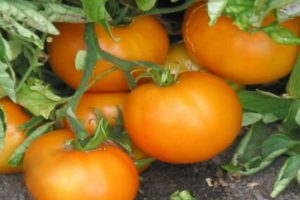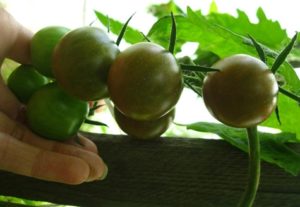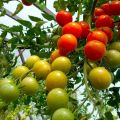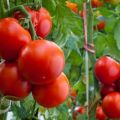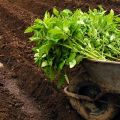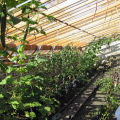Characteristics and description of the Long Keeper tomato variety, its yield
Even knowing English at the 7th grade of high school, you can understand that the Long Keeper tomato is a tomato for long-term storage. The selection is old, domestic. The variety was entered in the State Register at the end of the last century and has been undeservedly forgotten in recent years.
Description of the main varietal characteristics
Most summer residents strive to get an early tomato harvest, so varieties and hybrids of medium, medium early, early ripening are in great demand. Description Long keeper is knocked out in terms of time, it is a late ripening variety (130-135 days).
The main varietal feature of Long Keeper is that the fruits never ripen directly on the bush. This does not only apply to plants grown outdoors. Greenhouse tomatoes are also harvested green. More precisely, their color at the time of removal is white-green, pale.
Fruit characteristics
The shape of the fruit is classic round or regular flat-round. During harvest, the skin is milky white, after 4 weeks of storage, it turns orange-pink. Average fruit weight 130 g. It makes no sense to compare the taste of Long Keeper tomatoes with the taste of other varieties ripening in summer. He is definitely inferior to them. Professional tasters are higher than 3, they do not give a rating for taste.

The value of the variety is not in its taste, its dignity is different:
- The fruits are stored at room temperature until January, in the basement until March.
- To be transported.
- Suitable for fresh consumption and homemade products.
Bushes
Bushes grow in a greenhouse no higher than 1.5 meters. According to the type of growth, Long kiper is a determinant plant, the growth of which stops after the formation of 8-10 brushes on the central stem. The first raceme is formed over the 7th leaf, all others in each 3rd leaf sinus. The bushes are covered with medium-sized leaves with a specific color, they are green, but have a metallic shade.
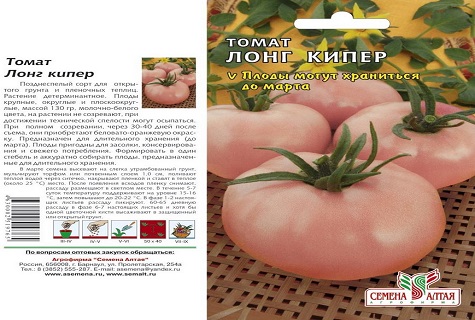
Landing scheme
You can achieve the declared yield of 6 kg per square meter with good care and adherence to the recommended planting scheme. When placed on 1 m² of four plants, form the bushes into 2 stems. Remove all stepchildren, lead the tomato plant into one stem with a denser planting - 6 bushes per square meter.
Advantages of the Long Keeper tomato
The reason for the choice of seeds can serve as advantages, the following varietal characteristics can be considered valuable:
- good fruit shape;
- preservation of presentation and taste for 3 months;
- immunity to TMV, cladosporium, fusarium;
- the ability to transport the crop over a long distance without losing its presentation;
- stable yield.
Planting and grooming tips
For strong seedlings, you need to prepare a high-quality planting mixture, consisting of garden (garden) soil, humus, sand. Take 2 parts of earth and humus, 1 part is enough sand.
Germinate indoors where the air temperature does not drop below 25 ° C. After sprouting, move the boxes to a cooler, well-lit room. During the growth of seedlings, maintain the air temperature in the room at 20-22 ° C, at night it can be reduced by several degrees.
Sow seeds for seedlings in March, preferably in the first half. Transplant seedlings that have reached the age of 40-50 days in a greenhouse. Although it is recommended for outdoor cultivation and greenhouses, it is best to grow the Long Keeper tomato cultivar in greenhouses or under arches.
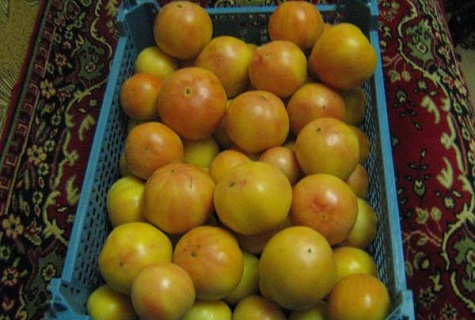
Reviews
Inna, Perm
They collected tomatoes of a pale, milky color, there were no red ones. There were many fruits on each bush, the height of the bushes in the greenhouse reached 1.5 meters. They put it in boxes for storage, put each row with paper. It's March now, still eating tomatoes. When ripe, their flesh is red, and the skin is pale pink. The taste for winter consumption is quite tolerable.
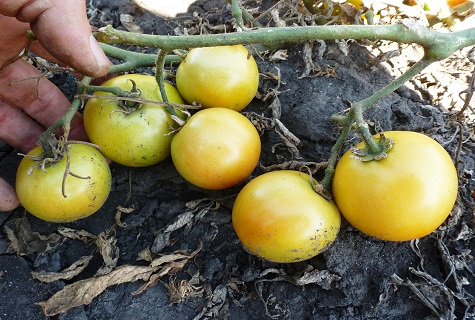
Tatiana, Vyazma
Last season I planted one bush of this variety. The seeds were sown at the end of February for growing in a greenhouse. The bush was neat, beautifully shaped. The fruits were sung right on the bush, the last ones were removed in September. They ate everything before November, so they did not have time to evaluate the long-term storage. Some had to be thrown away, deteriorated. Apparently it was necessary to sow seeds in March and remove unripe tomatoes.
Conclusion
This variety is useful not only for amateur summer residents. It should be adopted by small farmers. Late ripening will extend the sales period for the seasonal vegetable.
